Barbara Myerhoff
Even as a child, entranced by the tales her grandmother shared in their Cleveland kitchen, anthropologist Barbara Myerhoff knew that "stories told to oneself or others could transform the world." Born in 1935, she spent her lifetime studying the ways in which men and women from diverse cultures used their stories and sacred rituals to imbue difficult lives with meaning.
Myerhoff was a renowned scholar, heading the University of Southern California's anthropology department in Los Angeles where she lived and raised her family. A creative and extremely popular professor, she urged her students to use the tools of anthropology to question and better understand their own lives and the lives of others. But Myerhoff's influence also reached far beyond academia, and she touched a broad audience with her books and films.
Her earliest book, Peyote Hunt, delt with the Huichol Indians of Mexico. Guided by shaman-priest Ramon Medina Silva, Myerhoff was the first non-Huichol ever to participate in the annual pilgrimage to gather peyote. Her work explored the journey's rich symbols and rituals and the sacredness they conferred on Huichol life.
Declaring that the study of one's own culture was just as important as traditional anthropological research on the "exotic", Myerhoff began fieldwork with the elderly Jews of a Venice, California senior center in 1972. In her influential book, Number Our Days, as well as in essays, an Oscar-winning documentary film, an arts festival and even a play, Myerhoff showed how these Eastern European immigrants made every day meaningful, surviving amidst hardship, invisibility and poverty.
Myerhoff's work throughout the 1970's and 1980's shaped the anthropological study of ritual and of life histories. She redefined academic and public perceptions of the elderly and was a pioneer in her scholarship on women and religion.
Her research book took a more personal turn with her final documentary In Her Own Time. The film detailed Myerhoff's battle with cancer as the Hasidic community in the Fairfax neighborhood of Los Angeles led her through their rituals for healing. She died on January 7, 1985 at the age 49, soon after completing her last on-screen interview.
Like those she studied, Myerhoff was a master at finding the sacred in the smallest details of everyday experience. From the intimate connections she made in each field interview to the decade-spanning friendships that characterized her private life, Myerhoff brought a clear intensity and sense of meaning to everything she did.
The House on Taylor Road
"As a child, I was a notoriously bad eater, and Sofie [my grandmother] took this on as a personal challenge. We spent hours and months, sitting in the breakfast nook in the kitchen of the house on Taylor Road in Cleveland, spread before us the special morsels that she prepared to tempt me. We looked out the windows together, past our yard to the houses on the hill. For each bite I took, she gave us entry into one of the houses, and told a different story each day, about the people who lived inside.
"These accounts informed my entire life, more than any teacher or book or country I later encountered.... Sofie knew and taught me that everyone had some story, every house held a life that could be prepared and known, if one took the trouble. Stories told to oneself or others could transform the world. Waiting for others to tell their stories, even helping them do so, meant no one could be regarded as completely dull, no place people lived in was without some hope of redemption, achieved by paying attention. Boredom was completely banished by this appraoch, a simple essential lesson that decades later was to be the most basic message I tried to convey to my own students.
Notes:
- Entire quote from Myerhoff, Barbara, Number Our Days (New York: Dutton, 1978) 240.
The Story of the Forest
"There is a Hasidic story, repeated to me by Shmuel [a member of the Israel Levin Senior Center, the subject of much of Myerhoff's work] before he died, that sums up my feelings about nine years of work with the...Center people....
"When the great Rabbi Israel Baal Shem-Tov saw misfortune threatening the Jews, it was his custom to go into a certain part of the forest to meditate. There he would light a fire, say a special prayer, and the miracle would be accomplished and the misfortune averted. Later, when his disciple...had occasion...to intercede with heaven, he would go to the same place in the forest and say 'Master of the Universe, listen! I do not know how to light the fire, but I am still able to say the prayer.' Again the miracle would be accomplished.
"Still later, Rabbi Moshe-Lieb of Sasov, in order to save his people once more, would go into the forest and say: 'I do not know how to light the fire, I do not know the prayer, but I know the place and this must be sufficient.' It was sufficient and the miracle was accomplished.
"Then it fell to Rabbi Israel of Rizhyn to overcome misfortune. Sitting in his armchair, his head in his hands, he spoke to God: ' I am unable to light the fire and I do not know the prayer; I cannot even find the place in the forest. All I can do is to tell the story, and this must be sufficient.'
"And it was sufficient."
Notes:
- Quote from Mark Leviton, "Numbering Their Days," University of Southern California Chronicle Oct. 1980, 26.
- This story of the forest is also told in Elie Wiesel, Souls on Fire: Portraits and Legends of Hasidic Masters, trans. Marion Wiesel (New York: The Bibliophile Library, c1972).
An Assignment
In the following quote, friend Deena Metzger relates a story Myerhoff often told:
"Many years ago, Barbara Myerhoff was teaching a class at the University of Southern California in urban anthropology. As part of the course, the students were required to interview someone very different from themselves, someone with whom they would not normally converse. One young man in the class, who had lived an unusually protected and insulated middle-class life, was having such great difficulty in finding a subject that he considered dropping the course. However, the day the paper was due, he arrived in the class ecstatic.
"'I was at my wit's end,' he said, 'when it occurred to me to interview our Guatemalan housekeeper. Naturally, I was very nervous because I had never really spoken to her, and it was rather late at night. But as I had to do the paper, I went to her room and knocked at her door. When I entered, I explained my need, asking if it would be a terrible nuisance for her to tell me something about her life. She looked at me strangely and my heart sank. After what seemed a very, very long time, she said quietly, 'Every night before I go to sleep, I rehearse the story of my life, just in case someone should ever ask me. Gracias a Dios'."
Notes:
- Quoted in Deena Metzger, Writing for Your Life: A Guide and Companion to the Inner Worlds (San Francisco: Harper San Francisco, 1992) 255.
The Lady Professor at Home
Courtesy of the University Archives, University of Southern California.
Barbara Myerhoff married her husband Lee in 1954, at the age of 19. Their first child, Nick, was born in 1968, after Myerhoff had completed her doctoral work. Lee Myerhoff worked as a clinical psychologist while Barbara taught at the University of Southern California.
As she sometimes commented, combining motherhood with an academic career was "very bloody hard." The elders she studied at the Israel Levin Senior Center didn't make it any easier, continually asking the "lady professor," "Tell me, who's with your children?" In later years, Nick and Matthew sometimes accompanied their mother to assist with her research.
The Myerhoff's marriage ended in divorce after 28 years together in 1982. Barbara Myerhoff included this part of her personal life in her final documentary, In Her Own Time, when she filmed the ritual of obtaining her Jewish divorce of "get".
Notes:
- For Myerhoff's comments on being a working mother, see Sue Ellen Jares, "Forget Academic Applause: Anthropologist Barbara Myerhoffs Research Won an Oscar," People Magazine 25 Jan. 1978: 94.
- The quote "Tell me, who's with..." is from Barbara Myerhoff, Number Our Days (New York: Dutton, 1978) 26.
Anthropologists/Peyoteros
"As mentioned earlier, other anthropologists who worked among the Huichols did not undertake this journey, possibly because there is no place for nonparticipants in the rituals, it was my impression that Ramon solved the problem of what to do with outsiders only after we were en route to Wirikuta [the sacred land where peyote was gathered]. Impulsively, it seemed, he invited Furst [another anthropologist] and me to drink Holy Water and view the Sacred Land along with the other pilgrims just as we approached Wirikuta. From then on, barriers between 'us' and 'them' faded and our participation was profound and exacting. We were no longer exempt from the ritual prescriptions and proscriptions which applied to the other pilgrims."
"Nor were we given the privilege of attending to our work first. Previously, we had been allowed time to change film, make notes, operate the tape recorder and ask questions, but after drinking the Holy Water, Ramon treated us like fledgling Huichols who needed patience, urging, reprimanding, and reminding. For the first time, Ramon seemed more concerned that we 'learn our lessons well' than that we make a technically sound and accurate record of Huichol religion. In Wirikuta we were active novitiates instead of passive recipients and much was expected of us."
Notes:
1. Quote from Barbara Myerhoff, Peyote Hunt: the Sacred Journey of the Huichol Indians (Ithaca, N.Y.: Cornell University Press, 1974) 116-7.
Study Your Own
Barbara Myerhoff describes the differences inherent in working with her "own people," 1977.
Courtesy of Direct Cinema Limited.
"I had made no conscious decision to explore my roots or clarify the meaning of my origins. I was one of several anthropologists at the University of Southern California engaged in an examination of ethnicity and Aging."
"At first I planned to study elderly Chicanos, since I had previously done fieldwork in Mexico. But in the early 1970s in urban America, ethnic groups were not welcoming to curious outsiders, and people I approached kept asking me, 'Why work with us? Why don't you study your own kind.' This was a new idea to me. I had not been trained for such a project. Anthropologists conventionally investigate remote, preliterate societies....[Studying 'your own kind inevitably] creates problems with objectivity and identification, and I anticipated that I, too, would have my share of them if I studied the Center folk. But perhaps there would be advantages. There was no way that I could have anticipated the great impact of the study on my life, nor its duration. I intended to spend a year with them. In fact, I was with them continuously for two years (1973-1974, 1975-1976) and periodically for two more. In the beginning, I spent a great deal of time agonizing about how to label what I was doing—was it anthropology or a personal quest? I never fully resolved the question."
Notes:
- Quote from Myerhoff, Barbara, Number Our Days (New York: Dutton, 1978) 11-12.
Chicken Foot Stew
"Being so rooted in their Judaism helped the old people in their struggles and celebrations. They were sufficiently comfortable with it to improvise upon it and adapt it freely as needed, for small requirements and large. Basha exemplified this when she described her dinner preparations. She ate alone in her tiny room. Over an electric hot plate, she cooked her chicken foot stew (chicken feet were free at the supermarket). Before eating, she spread a white linen handkerchief over the oilcloth covering the table, saying:
"This my mother taught me to do. No matter how poor, we would eat off clean white linen, and say the prayers before touching anything to the mouth. And so I do it still. Whenever I sit down, I eat with God, my mother, and all the Jews who are doing these same things even if I can't see them."
"Such a meal is a feast, superior to fine fare hastily eaten, without ceremony, attention, or significance. Because of such things, I came to see the Center elderly as in possession of the philosophers' stone- that universally sought, ever-elusive treasure, harboring the secret that would teach us how to transmute base metals into pure gold. The stone, like the bluebird's feather of happiness, is said to be overlooked precisely because it is so close to us, hidden in the dust at our feet."
Notes:
- Entire quote from Myerhoff, Barbara, Number Our Days (New York: Dutton, 1978) 22.
Transformation
Footage capturing dancing at the Israel Levin Senior Center in 1977 by Barbara Myerhoff.
Courtesy of the University Archives, University of Southern California East Library Building.
"The film brought the Center immediate attention—visitors, donations, the establishment of programs, some of which went on for years. The capacity of film to change consciousness has always been clear; what had not been so clear to me previously was the extent to which film can be a service as well as a record....And watching people's responses to particular moments
is also a source of research data. In one scene, an older woman without a partner dances tentatively at first, then picks up momentum and ends up dancing with great verve....It is an emblematic moment in which one can see the crystallization of years of experience: the steps, leading up to the courage to be so alive though alone, are laid out like pebbles marking a path."
"Audiences of all ages and both sexes often gasp at that image. And Gita, the proud ballerina who is accompanied in her dance by her blind husband, becomes another such emblem. He holds her wrist with reverence, and it is evident that he still sees her beauty....At this instant, the Center is no longer a miniature arena; it swells to become as immense as the grandest stage in one of life's most exalted enterprises. The common human impulse for beauty and an exhibition of grace are identified; the couple is not any longer cute or endearing but magnificent. Such a transformation can only be felt through film..."
Notes:
- Barbara, Myerhoff, ""Surviving Stories," Remembered Lives: the Work of Ritual, Storytelling, and Growing Older, ed. Marc Kaminsky (Ann Arbor: University of Michigan Press, 1992) 293-5.
Life Not Death in Venice
In 1980 Myerhoff organized the 'Life not Death in Venice' art and cultural festival at USC, "where the elderly and their art works, and scholars and artists who had worked in the same Eastern European cultural traditions, were brought togehter. The older people served as docents to their art works, and their life histories, collected by students, were presented along with the art."
With the attraction of the festival's "rather glamorous" evening events that included celebrities like Isaac Bashevis Singer, audiences viewing the art were "large, enthusiastic, and heterogeneous. Many were young people who were astonished at finding themselves for the first time among so many old people. 'I never dreamt they had so much energy!' was a commonly heard remark....' Grandma, you never told me you could draw!' 'You never asked', was the reply....
"The visibility we had hoped for allowed us to present the exhibition and celebration as a model, adaptable to people of any cultural group. There is no doubt that there are ethnic elderly people all over America, waiting to be asked, to be discovered, whose art works sit on boxes in the cellar, in trunks, in the attic, whose poems are jammed in drawers, whose reminiscences need to find a witness, a receiver, so that they may complete the interchage that is requisite to all cultural transmission."
Notes:
- First paragraph quote from Barbara, Myerhoff, "Life Not Death in Venice: Its Second Life," Remembered Lives: the Work of Ritual, Storytelling, and Growing Older, ed. Marc Kaminsky (Ann Arbor: University of Michigan Press, 1992) 262.
- Second and third paragraph quotes from Barbara, Myerhoff, "Surviving Stories," Remembered Lives: the Work of Ritual, Storytelling, and Growing Older, 300.
Domestic Religion
Institution: University Archives, University of Southern California East Library Building
In the following quote from the book Number Our Days, Rachel, one of the center elders, describes "domestic religion"—a concept Myerhoff used to examine the different religious experiences of Jewish men and women:
RACHEL: "Now I did not like to wipe the dishes because the towel was so rough, it didn't feel good, and I did not know how to explain this to Grandmother....So I rebelled against that. The job was not well done. I'll never forget that, how my grandmother, she took me aside one day....She began first all around with praises. "Rucheleh," she says,"...you know you are carrying a holy name. And according to your name, you have to be perfect." Well, she gave me all that until when I looked at her, my spirit was rising and rising, higher and faster until I forget all about that sturdy towel and my hatred for it....after that speech, I was transformed into a different person. The towel became soft as fine linen and I loved to wipe the dishes. And always before me, when I was wiping the dishes was the name of the holy mother Rachel, and I thought, 'She's right. I am that woman.' That, that is what I call domestic religion....
"I think the boys didn't have it that way. They knew what the sacred words meant so they could argue and doubt. But with us girls, we couldn't doubt because what we knew came without understanding. These things were injected into you in childhood....When it goes in this way, I describe, Jewish comes up in you from the roots and it stays with you all your life."
Notes:
- Entire quote from Barbara Myerhoff, Number Our Days (New York: Dutton, 1978) 234-5.
The Story of the Shoe Box
Myerhoff told the following story from her Fairfax fieldwork a number of times in later years, often as a way of discussing the crucial importance of life history work and of telling stories as a means of survival:
"I was working with a man who was a survivor [of the Holocaust]...When he was 11, they knew in his family that the time was limited, everyone knew that, and he was told to pack some things because they would be leaving in a hurry....
"So picture an 11-year old child looking around his room, knowing his life is about to be destroyed: what should he take? And he was frozen in the dilemma of the choice. And so he made himself two shoe boxes. In one shoe box he put pictures of his family, he put some poetry he had written, he put a postcard from a girl- his treasures- his autobiography of things. And in the other he put an extra pair of shoes and some underwear and a hanky and a knife and a watch. And I think he probably put in a toothbrush. And he came home from school one day and he was told, 'Now! Run!' And he ran in and grabbed the shoe box. And they left.
"When they stopped again, he looked into the box, and he had taken the wrong one. He had the hanky and the shoes and the toothbrush and so on.
"And he thought, 'What did I want this box for? What did I want the other box for? What did the other box mean- to anybody?' And he said, 'It was as though I was standing at the edge of the sea, and I knew I would be pushed into the sea with my box, and the only thing that mattered was that I not sink with the box. It was as if I would try to throw the box back onto shore, and maybe somebody would catch it.'"
Notes:
- Quoted in Marc Kaminsky, "Story of the Shoe Box: On the Meaning and Practice of Transmitting Stories," Handbook of the Humanities and Aging, eds. Thomas R. Cole, David D. Van Tassel, and Robert Kastenbaum (New York: Springer, 1992) 309-10.
Finding Rituals
Barbara Myerhoff discusses the spirituality and community she encountered in her work with Hasidic Jews, 1977.
Courtesy of the Direct Cinema Limited.
In this transcript from an outake of In Her Own Time, Myerhoff discusses illness and ritual with the film's director, Lynne Littman:
MYERHOFF: "I must say, I don't know how to explain it,...[but] this whole illness is taking on—well, not only spiritual but I have to say specifically Jewish implications because what's turning out to be the case is that the Jewish world—and I mean the intensely Jewish world, not the usual secular circles that I move in- have more resources...
"[They] have rituals, they have ceremonies, they have knowledge, they have things to do that other people do not in the cases of illness or emergency of a crisis like this. And that's been a revelation to me, I must say....And even something that seems to you possibly as commonplace as mikvah...finding a religious ritual that is a purification, that also happens to be mine, I mean, as an anthropologist I can tell you, well, they do this all over the world, every religion has some sort of immersion in the water that makes you new. But the fact is...I also have it available to me as a Jew....Not just in relation to menstruation but also in relation to purification. That's really very important for me to know about. And I think for a lot of other Jews to know about.
LITTMAN: "I think you've given a new slant, a new revelation, so maybe someone else will pick up on it."
Notes:
- Barbara Myerhoff, In Her Own Time field notes, Barbara Myerhoff Papers microfilm, U of Southern California, reel 6.
Media
| Title | Institution | Publication | Type |
|---|---|---|---|
| Myerhoff Speaking About the Rituals of the Passover Seder at a Conference | University Archives, University of Southern California East Library Building | audio/mpeg | |
| Rachel Discusses Domestic Religion with Myerhoff at the Israel Levin Senior Center | University Archives, University of Southern California East Library Building | audio/mpeg | |
| A Couple at the Israel Levin Senior Center | University Archives, University of Southern California East Library Building | image/jpeg | |
| A Drawing by Myerhoff's Mother, Florence Siegal | University Archives, University of Southern California East Library Building | image/jpeg | |
| A Woman at the Center Lighting the Candles for Shabbat | University Archives, University of Southern California East Library Building | image/jpeg | |
| At Sabbath Services | University Archives, University of Southern California East Library Building | image/jpeg | |
| At the Israel Levin Center | University Archives, University of Southern California East Library Building | image/jpeg | |
| Barbara Myerhoff | University Archives, University of Southern California East Library Building | image/jpeg | |
| Barbara Myerhoff | University Archives, University of Southern California East Library Building | image/jpeg | |
| Barbara Myerhoff | Lynne Littman | image/jpeg | |
| Barbara Myerhoff | University Archives, University of Southern California East Library Building | image/jpeg | |
| Barbara Myerhoff | University Archives, University of Southern California East Library Building | image/jpeg | |
| Barbara Myerhoff as a Young Girl with her Grandmother Sophie Mann | Nick Myerhoff | image/jpeg | |
| Center Members at the Life Not Death in Venice Protest | University Archives, University of Southern California East Library Building | image/jpeg | |
| Cover from the Playbill of the Mark Taper Forum Production | image/jpeg | ||
| Dancing at the Israel Levin Senior Center | University Archives, University of Southern California East Library Building | image/jpeg | |
| Deena Metzger's Birthday - (from left to right) Nancy Bacal, Jane Alexander Stewart, Metzger, Myerhoff | Nick Myerhoff | image/jpeg | |
| Faye Ginsburg, Barbara Myerhoff and Barbro Klein in New York | University Archives, University of Southern California East Library Building | image/jpeg | |
| Lee and Barbara Myerhoff | Nick Myerhoff | image/jpeg | |
| Myerhoff (center) Performing at the Life Not Death in Venice Exhibit | University Archives, University of Southern California East Library Building | image/jpeg | |
| Myerhoff and Ramon Medina Silva | University Archives, University of Southern California East Library Building | image/jpeg | |
| Myerhoff and Two Center Members | University Archives, University of Southern California East Library Building | image/jpeg | |
| Myerhoff as a Young Woman | Nick Myerhoff | image/jpeg | |
| Myerhoff at Conference on Youth, Press Conference | University Archives, University of Southern California East Library Building | image/jpeg | |
| Myerhoff at Edith Turner's Home with Turner's Daughter and Granddaughter | Edith Turner | image/jpeg | |
| Myerhoff at the Life Not Death in Venice Exhibit | University Archives, University of Southern California East Library Building | image/jpeg | |
| Myerhoff Doing Fieldwork | University Archives, University of Southern California East Library Building | image/jpeg | |
| Myerhoff During the Filming of In Her Own Time | Bill Aron | image/jpeg | |
| Myerhoff Participating in the Ceremony of "Knotting-In" | University Archives, University of Southern California East Library Building | image/jpeg | |
| Myerhoff Speaking with a Member of the Israel Levin Senior Center | Tony Costa | image/jpeg | |
| Myerhoff with Children Nick and Matt on her Favorite Ride | Nick Myerhoff | image/jpeg | |
| Myerhoff with Lupe Silva and her Daughter | University Archives, University of Southern California East Library Building | image/jpeg | |
| Myerhoff with Members of the Israel Levin Senior Center | Tony Costa | image/jpeg | |
| Myerhoff with Morrie Rosen, Director of the Israel Levin Center | University Archives, University of Southern California East Library Building | image/jpeg | |
| Myerhoff with Victor Turner, Harvey Goldberg, Yoran Bilu and Others on a Pilgrimage to Meron, Israel | Edith Turner | image/jpeg | |
| Myerhoff Working on Notes During the Peyote Hunt | University Archives, University of Southern California East Library Building | image/jpeg | |
| One of the Center Elders with a Picture of her Grandmother | University Archives, University of Southern California East Library Building | image/jpeg | |
| Poster from the Film Number Our Days | University Archives, University of Southern California East Library Building | image/jpeg | |
| Ramon Administering the Sacred Water to Myerhoff | University Archives, University of Southern California East Library Building | image/jpeg | |
| Ramon Medina Silva Visiting Myerhoff's Class | Nick Myerhoff | image/jpeg | |
| The Israel Levin Senior Center in Venice, California | University Archives, University of Southern California East Library Building | image/jpeg | |
| Two Members of Israel Levin Center | University Archives, University of Southern California East Library Building | image/jpeg | |
| Yarn Painting of Barbara Myerhoff Receiving the Name of a Sacred Peyote-Seeker | University Archives, University of Southern California East Library Building | image/jpeg | |
| Dancing at the Israel Levin Senior Center | Direct Cinema Limited | video/x-flv | |
| Myerhoff Describes the Differences Inherent in Working with her "Own People" | Direct Cinema Limited | video/x-flv | |
| Myerhoff Discusses the Spirituality and Community she has Encountered in her Work with the Hasidic Jews | Direct Cinema Limited | video/x-flv |
Timeline
Born in Cleveland, Ohio on February 16; raised by her mother, Florence (Mann) and stepfather Norman Siegal as well as her grandmother Sofie Mann; the Siegals move to Los Angeles, California when she is a teenager
Marries Lee Myerhoff, psychologist; they have two sons: Nicholas (b. 1968) and Matthew (b.1971); they divorce in 1982
Receives BA in Sociology from University of California at Los Angeles
Receives Masters Degree in Human Development at University of Chicago.
Begins fieldwork on the Huichol Indians of Northern Mexico; is the first non-Huichol, together with Peter Furst, to embark on the peyote hunt, a sacred annual pilgrimage.
Receives doctorate in Anthropology for her dissertation on Huichol ritual from University of California at Los Angeles; becomes an assistant professor of Anthropology at the University of Southern California where she wins various awards for her creative teaching.
Begins fieldwork on elderly Jews at the Israel Levin Center in Venice, California.
Publishes her first book, Peyote Hunt: The Sacred Journey of the Huichol Indians, which is nominated for a National Book Award.
Becomes full professor at USC and Chair of Anthropology Department; heads the department until 1980 and develops innovative graduate program in Visual Anthropology.
Completes film Number Our Days with director Lynne Littman, depicting her research at the Israel Levin Center; wins an Oscar for best short documentary; co-edits Secular Ritual: Forms and Meaning.
Publishes the book Number Our Days, the culmination of her work at the Israel Levin Center; receives excellent reviews for her work including selection as one of the year's ten best Social Science books by the New York Times; begins teaching occasional workshops in New York on performance, life histories, ritual and storytelling at NYU and the Hunter/Brookdale Center for the Aging
Organizes "Life not Death in Venice," an ambitious exhibit at USC featuring the work of elderly Jewish artists and celebrating shetl culture
Helps adapt Number Our Days for the stage, performed at the Mark Taper Forum.
Begins studying and filming the Jewish community in Fairfax, California.
Diagnosed with cancer, Myerhoff asks director Lynn Littman to collaborate on the Fairfax film; they focus In Her Own Time on Myerhoff's experiences with the Hasidic community as they try to heal her; co-edits The Feminization of America: How Women's Values are Changing Our Public and Private Lives.
Died in Los Angeles of lung cancer on January 7, at age 49
Bibliography
De Mille, Richard, ed. The Don Juan Papers: Further Castaneda Controversies. Santa Barbara, California: Ross-Erikson, 1980.
Frank, Gelya. Venus on Wheels: Two Decades of Dialogue on Disability, Biography, and Being Female in America. Berkeley: University of California Press, 2000.
Frank, Gelya. "The Ethnographic Films of Barbara G. Myerhoff: Anthropology, Feminism, and the Politics of Jewish Identity." Women Writing Culture. Eds. Ruth Behar and Deborah A. Gordon. Berkeley: University of California Press, 1995. 207-232
Foldes, Steven. "In Memory of Barbara Myerhoff." Speech. Minnesota. 4 February 1985.
Gold, Herbert. "TV's Little Dramas." Harpers March 1977.
In Her Own Time. Dir. Lynne Littman. Videocassette. Direct Cinema Limited, 1986.
Jares, Sue Ellen. "Forget Academic Applause: Anthropologist Barbara Myerhoff's Research Won an Oscar." People Magazine 25 Jan. 1978: 93-4
Kasdan, Mary. "Barbara Myerhoff: Dedicated Student of the Living." Valley News Flair 10 June 1979: Section 4.
Kaminsky, Marc. "Story of the Shoe Box: On the Meanin and Practice of Transmitting Stories." Handbook of the Humanities and Aging. Eds. Thomast R. Cole, David D. Van Tassel, and Robert Kastenbaum. New York: Springer, 1992. 307-327.
Kaminsky, Marc. "Definitional Ceremonies: Depoliticizing and Reenchanting the Culture of Aging." Voices and Visions of Aging: Toward a Critical Gerontology. Eds. Thomas R. Cole, et al. Ne York: Springer, 1993. 257-274.
Letters of recommendation written for Myerhoff. Box 12, Barbara Myerhoff Papers, U of Southern California.
Leviton, Mark. "Numbering Their Days." University of Southern California Chronicle Oct. 1980: 23-26
Metzger, Deena. Writing for Your Life: A Guide and Companion to the Inner Worlds. San Francisco: Harper San Francisco, 1992.
Metzger, Deena. "Forward: Barbara Myerhoff Storyteller." Unpublished essay.
Metzger, Deena. "The Ultimate Magician." Unpublished Essay.
Metzger, Deena. Memorial Speech. Los Angeles. 8 Jan. 1985.
Myerhoff, Barbara G. "After Fifteen Years of Feminism, Where is Women's Friendship?" Ms. June 1985: 85-87
——. "Balancing Between Worlds: The Shaman's Calling." Parabola 1.2 (1976): 6-13
——. "Bobbes and Zeydes: Old and New Roles for Elderly Jews. Women in Ritual and Symbolic Roles. Judith Hoch-Smith and Anita Spring, eds. New York: Plenum Press, 1978.
——. "The Huichol and the Quest for Paradise." Parabola 1.1 (1976): 22-29
——. In Her Own Time field notes, Barbara Myerhoff Papers microfilm, U of Southern California, reel 6:5.
——. "In Praise of Spoken Words." 23 November 1979. Box 32, folder 38, Barbara Myerhoff Papers, U of Southern California.
——. Letter to Ron. 5 February 1980. Academic/Friendship Correspondence, Box 55, Barbara Myerhoff Papers, U of Southern California.
——. Letter detailing research at Israel Levin Center, ts. Barbara Myerhoff Papers, U of Southern California.
——. "Life Passages." Smithsonian Institution Office of Folklife Programs. Celebration: A World of Art and Ritual. Ed. Victor Turner. Washington, D.C.: Smithsonian Institution Press, 1982.
——. "Living with Death: Elderly Venice Jews Accept and Endure." Interview with Hynda Rudd. Los Angeles Herald Examiner 15 March 1979: A1+
——. "Maria Sabina and the Saint Children." Parabola 7.1 (1982): 92-95
——. Myerhoff speaking at a conference about the rituals of the Passover sedar. Audiotape. Barbara Myerhoff Papers, University Archives, U of Southern California, Los Angeles.
——. "Notes on Living with a Shaman: the Shaman as Houseguest." 10 May 1971. Barbara Myerhoff Papers microfilm, U of Southern California, reel 13.
——. "Notes on Peyote Session." Barbara Myerhoff Papers microfilm, U of Southern California, reel 13.
——. Number Our Days. New York: Dutton, 1978.
——. Number Our Days field notes, Barbara Myerhoff Papers microfilm, U of Southern California, reel 5.
——. "NYU: May 24—June 5, 1982: Self-creation through narrative." Notes, Box 59, NYU course folder, Barbara Myerhoff papers, U of Southern California.
——. "Of Course." field notes Nov. 1981/Dec.1 1981. Nod Scrapbook Box 54, Barbara Myerhoff Papers, U of Southern California.
——. Peyote Hunt: the Sacred Journey of the Huichol Indians. Ithaca, N.Y.: Cornell University Press, 1974.
——. "Peyote and the Mystic Vision." Art of the Huichol Indians. Ed. Kathleen Berrin. San Francisco: Fine Arts Museums of San Francisco, 1978. 56-70.
——. "Pilgrimage to Meron.:Inner and Outer Peregrinations." Creativity/Anthropology. Eds. Smadar Lavie, Kirin Narayan, and Renato Rosaldo. Ithaca: Cornell University Press, 1993. 211-222.
——. "The Older Woman as Androgyne." Parabola 3.4(1978): 74-89.
——. "Flying the Children to Wirikuta." Parabola 9.3 (1984):86-9
——. Rachel discusses domestic religion with Myerhoff at the Israel Levin Senior Center. Audiotape. Barbara Myerhoff Papers, University Archives, U of Southern California, Los Angeles.
——. Remembered Lives: the Work of Ritual, Storytelling, and Growing Older. Ed. Marc Kaminsky. Ann Arbor: University of Michigan Press, 1992.
——. "Re-membered Lives." Parabola 5.1 (1980): 74-77.
——. Research on women's friendship. Barbara Myerhoff Papers microfilm, U of Southern California, reel 12.
——. "The Revolution as a Trip: Symbol and Paradox." The Annals of the American Academy of Political and Social Science 395 (1971): 105-16
——. "The Ritual Telling of the Great Story that Shapes Individual Lives." Transcript of lecture, ts, box 55, folder 5. Barbara Myerhoff Papers, U of Southern California.
——. Submission to Dart Award Program Special Award for Academic Innovation. Ts. 15 June 1970, Box 12, folder 1, Barbara Myerhoff Papers, U of Southern California.
——. "Telling One's Story." Center Magazine 8.2 (1980): 22-40
——. "USC in May: The Opening of the University." Youth and Society 3.3 (1972): 353-74
Myerhoff, Barbara G. and Elinor Lenz. The Feminization of America: How Women's Values Are Changing Our Public and Private Lives. Los Angeles: J.P. Tarcher, 1985.
Myerhoff, Barbara G. and Deena Metzger. "Dear Diary." Chrysalis 7 (Winter, 1979): 39-49.
——. "Social Change and the Culture of Women," Ts. April 1979. Box 9, folder 13, Barbara Myerhoff Papers, U of Southern California.
Myerhoff, Barbara G. and Sally Falk Moore, eds. Symbol and Politics in Communal Ideology: Cases and Questions. Ithaca, N.Y.: Cornell University Press, 1975.
Myerhoff, Barbara and Lee Myerhoff. "Field Observations of Middle Class Gangs." Social Forces 42.3 (1964):328-36.
Myerhoff, Barbara G. and Jay Ruby. Forward: A Crack in the Mirror: Reflexive Perspectives in Anthropology. Ed. Jay Ruby. Philadelphia: University of Pennsylvania Press, 1982.
Myerhoff, Barbara G. and Andrei Simic, eds. Life's Career-Aging: Cultural Variations on Growing Old. Beverly Hills, Calif.: Sage Publications, 1978.
Myerhoff, Barbara G. and Virginia Tufte, eds. Changing Images of the Family. New Haven: Yale University Press, 1979.
"Myerhoff, KCET Look at 'Indomitable Survivors.'" B'nai B'rith Messenger 24 Sept. 1976: 13.
Number Our Days. Dir. Lynne Littman. Videocassette. Direct Cinema Limited, 1983.
Number Our Days. Playbill Issue of Performing Arts (1981).
Prell, Riv-Ellen. "The Double Frame of Life History in the Work of Barbara Myerhoff." Interpreting Women's Lives: Feminist Theory and Personal Narratives. Eds. The Personal Narratives Group, Joy Webster Barbre, et al. Bloomington: Indiana University Press, 1989. 241-258.
Prell, Riv-Ellen. "Barbara Myerhoff." Jewish Women in America. Vol. 2. Eds. Paula E. Hyman and Deborah Dash Moore. New York: Routledge, 1997. 958-60.
Press clipping on Myerhoff's early research on Youth and Family from 1965-6. Box 12, folder 1, Barbara Myerhoff Papers, U of Southern California, including:
Samuel, Edith, ed. Growing Older. Issue of Keeping Posted 27.6 (1982): 1-15.
Silberman, Charles E. "A Proper Way to Live." Rev. of Number Our Days by Barbara Myerhoff. New York Times 1 April 1979: 11+.
Strimling, Arthur. All That Our Eyes Have Witnessed. Unpublished script. 1988.
Zuanich, Barbra. "Wonderful World of Old People." Los Angeles Herald Examiner 20 May 1977: C1+.

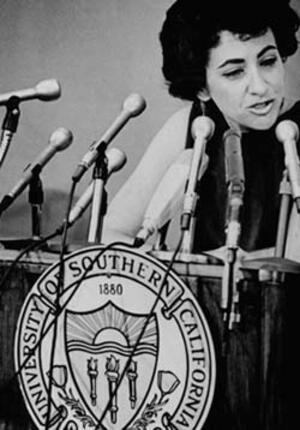
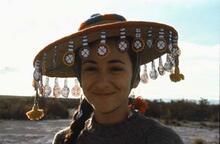
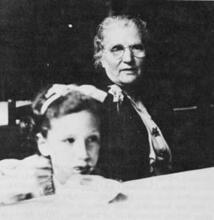
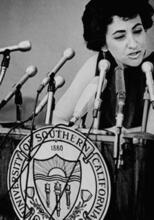
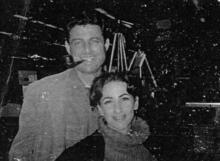
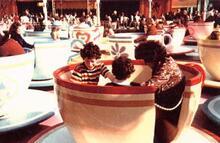


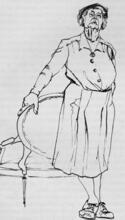
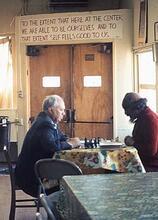

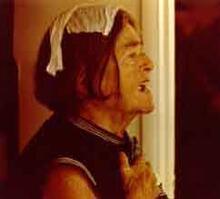
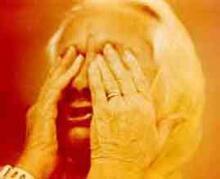
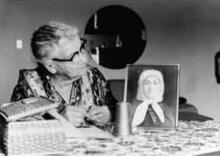
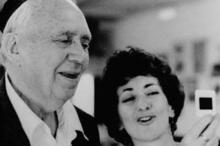
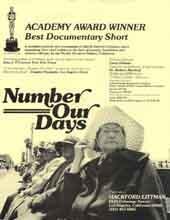
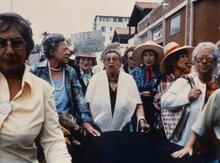


Hi there, i read your blog from time to time and i own a similar one and i was just curious if you get a lot
of spam comments? If so how do you stop it,
any plugin or anything you can suggest? I get so much lately it's driving me mad so any assistance is very much appreciated.